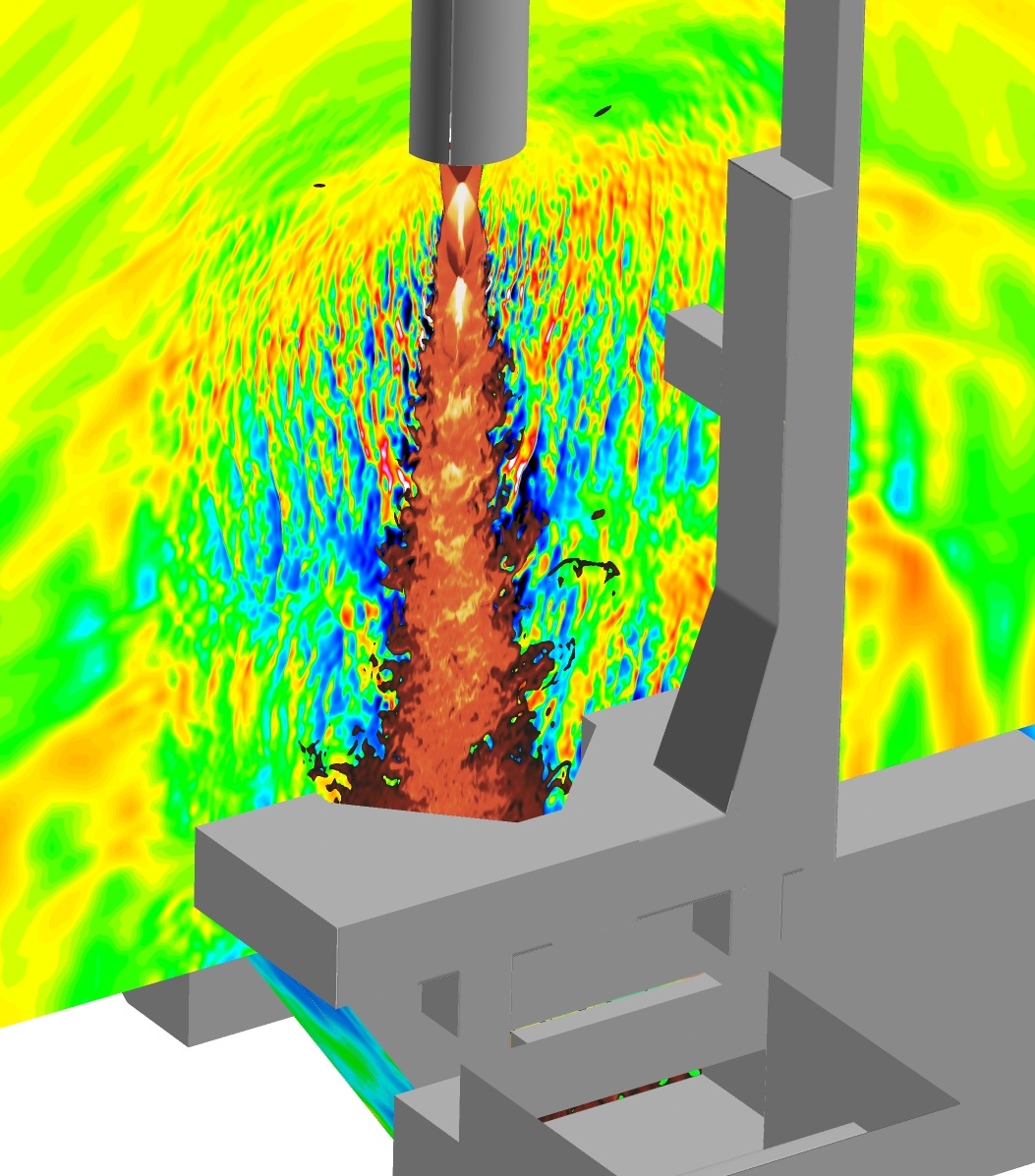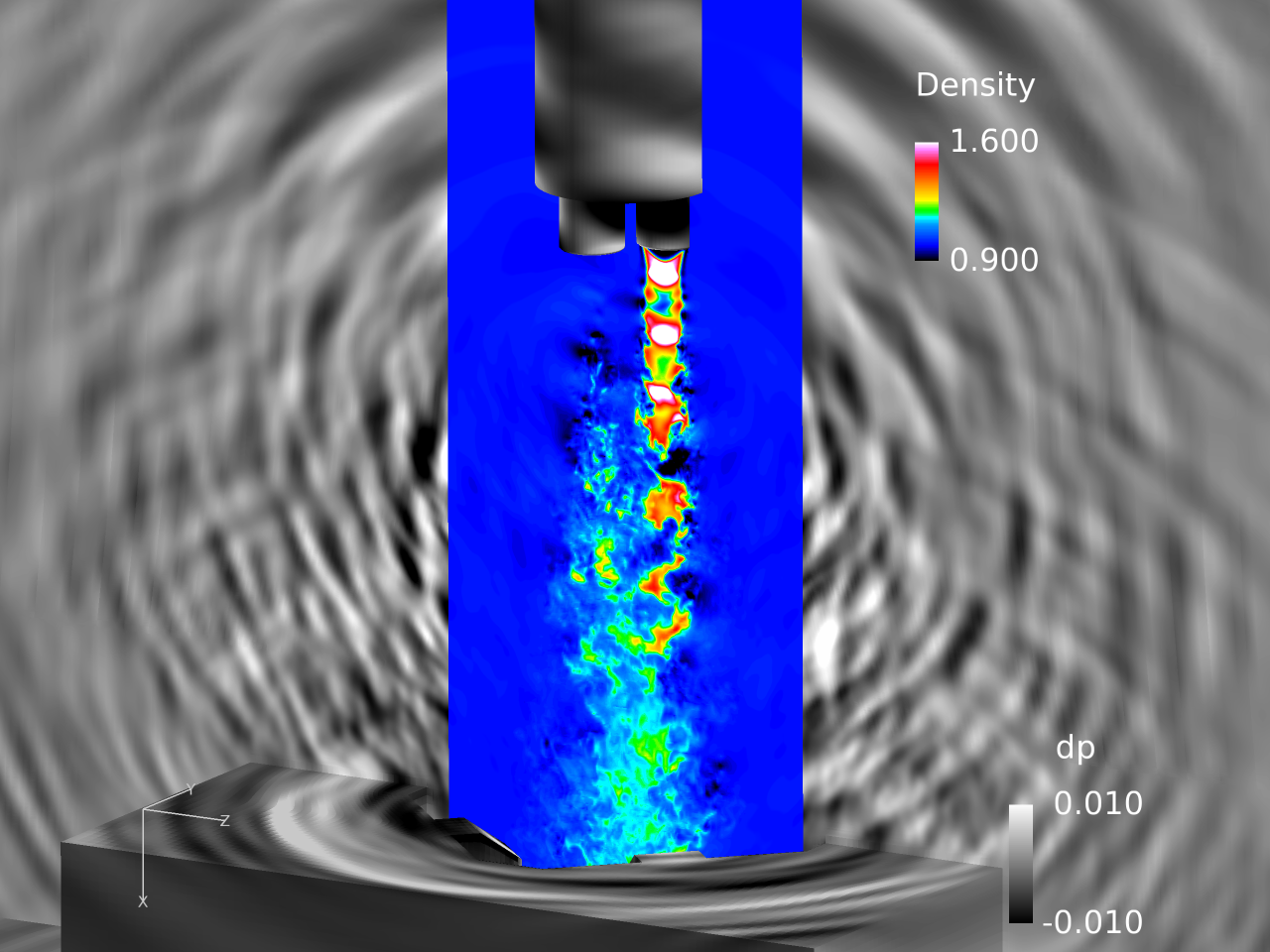Research and Development of Predicting Launch Vehicle Acoustics
JAXA Supercomputer System Annual Report April 2017-March 2018
Report Number: R17EG3213
Subject Category: Research and Development
- Responsible Representative: Eiji Shima, Research Unit III, Research and Development Directorate
- Contact Information: Seiji Tsutsumi tsutsumi.seiji@jaxa.jp
- Members: Ryoji Takaki, Seiji Tsutsumi, Hiroyuki Ito, Taro Shimizu, Junya Aono, Takanori Haga, Yuhi Morii, Masaharu Abe, Masayuki Kakehi, Mikiroh Motoe, Manabu Hisida, Yasuhiro Kawashima, Shun Ito, Kazuma Tago
Abstract
Prediction and reduction of the acoustic environment level caused by aeroacoustics of exhaust jet at lift-off and transonic buffet are required for the development of the next flagship launch vehicle (H3). Therefore, improve the acoustic analysis tool at the lift-off constructed up to the previous phase, and expand the range of application, predict the acoustic environment throughout the flight of the launcher / spacecraft, contribute to the design of low noise launch pad and silent launch vehicle.
Reference URL
N/A
Reasons for using JSS2
It is necessary to carry out LES analysis on the scale of billions of points, and to achieve the targeted frequency resolution it is essential to havesupercomputer.
Achievements of the Year
Through the subscale model test conducted for the acoustic design of H3 launch vehicle, it was observed that acoustic level was reduced by shielding the air intake attached to flame duct. Numerical study was conducted to investigate the flowfield of air intake and its effect on the acoustic environment around the launch vehicle. In the subscale model test, clustered liquid rocket engines (LE-9s) located at the core of the vehicle were modeled as a single engine. Numerical study was also utilized to evaluate the difference of acoustic environment between subscale and full-scale acoustic environment. Figure 1 shows the results of the subscale test configuration of the H3-30 having three liquid rockets (LE – 9) without solid rocket boosters.
In the development of H3 launch vehicle, it is considered to cluster the first-stage main engines. A small cold flow test has been carried out so far and observation of Mach wave reduction of free jet by clustering is observed, but the clustering effect under the condition that interacts with the launch pad is unconfirmed. In the subscale test conducted this fiscal year, acoustic measurements simulating a new launch pad geometry were performed, but due to constraints of the feed line system, cluster nozzles were modeled as a single nozzle of the same exhaust power, and the clustering effect was not evaluated. The purpose of this numerical analysis is to clarify the clustering effect on the interaction between the exhaust jet and the launch table (Fig. 2), and the sound pressure level in the vicinity of the launcher for each clustered and single nozzle configuration is compared using the lift amount as a parameter.As a result of the analysis, the lift amount that becomes the maximum sound pressure can be parameterized with a dimensionless lift amount at each nozzle diameter D (in this case it becomes maximum at 17 D). In addition, it was found that the sound pressure (OASPL) of the cluster nozzle is smaller than that of the single nozzle when comparing with the same dimensionless lift amount.

Fig.1: Result of subscale configuration of H3-30. (Acoustic field: static pressure, Hydrodynamics of jet: temperature)

Fig.2: Interaction between cold cluster jet and launch pad (instantaneous field of density and pressure).
Publications
N/A
Usage of JSS2
Computational Information
- Process Parallelization Methods: MPI
- Thread Parallelization Methods: OpenMP
- Number of Processes: 64 – 119
- Elapsed Time per Case: 1,440.00 hours
Resources Used
Fraction of Usage in Total Resources*1(%): 5.03
Details
Please refer to System Configuration of JSS2 for the system configuration and major specifications of JSS2.
| System Name | Amount of Core Time(core x hours) | Fraction of Usage*2(%) |
|---|---|---|
| SORA-MA | 41,901,509.38 | 5.49 |
| SORA-PP | 135,532.99 | 1.70 |
| SORA-LM | 880.09 | 0.45 |
| SORA-TPP | 0.00 | 0.00 |
| File System Name | Storage Assigned(GiB) | Fraction of Usage*2(%) |
|---|---|---|
| /home | 5,591.15 | 3.87 |
| /data | 33,975.56 | 0.63 |
| /ltmp | 5,913.99 | 0.45 |
| Archiver Name | Storage Used(TiB) | Fraction of Usage*2(%) |
|---|---|---|
| J-SPACE | 111.51 | 4.80 |
*1: Fraction of Usage in Total Resources: Weighted average of three resource types (Computing, File System, and Archiver).
*2: Fraction of Usage:Percentage of usage relative to each resource used in one year.
JAXA Supercomputer System Annual Report April 2017-March 2018


